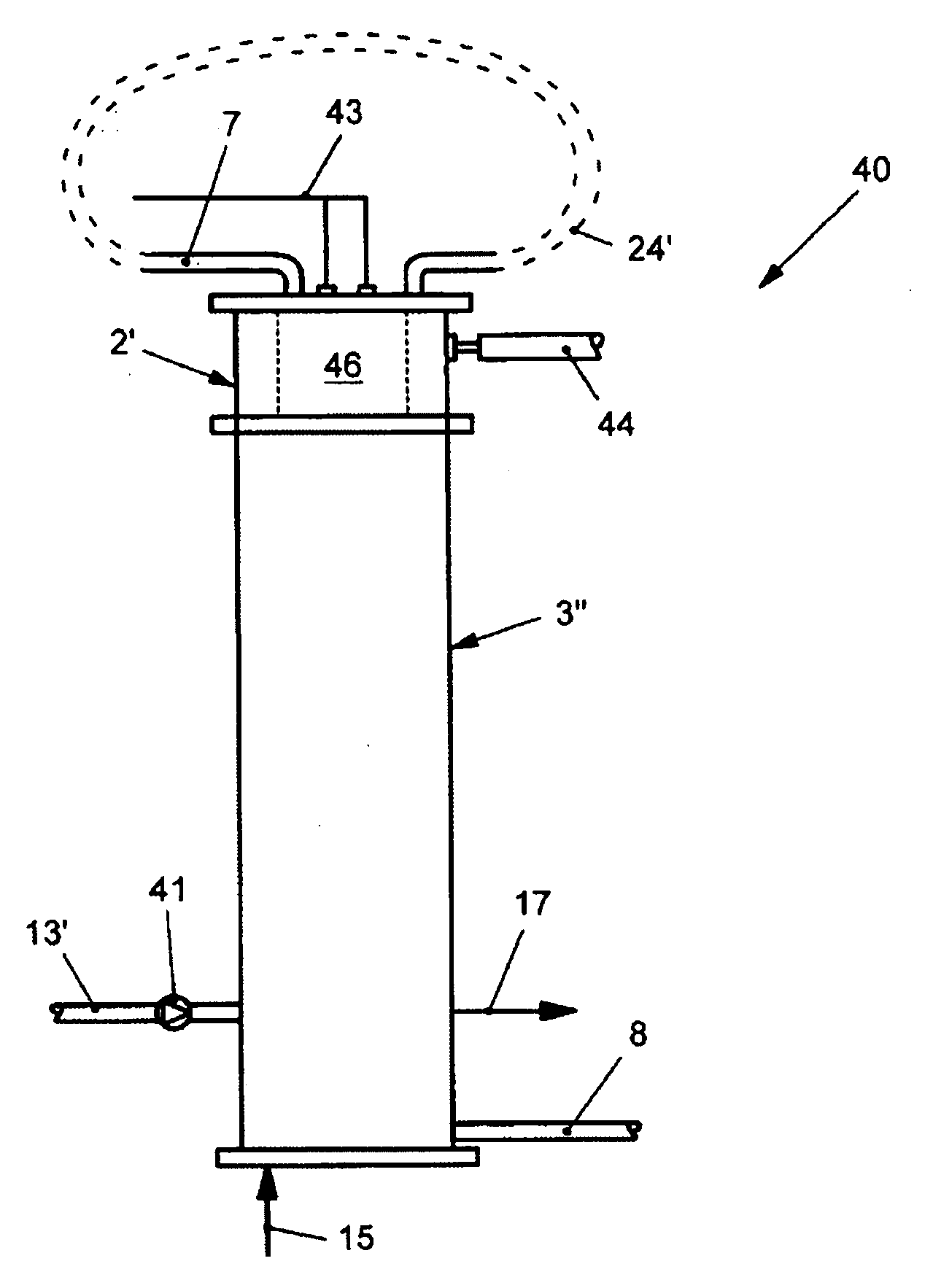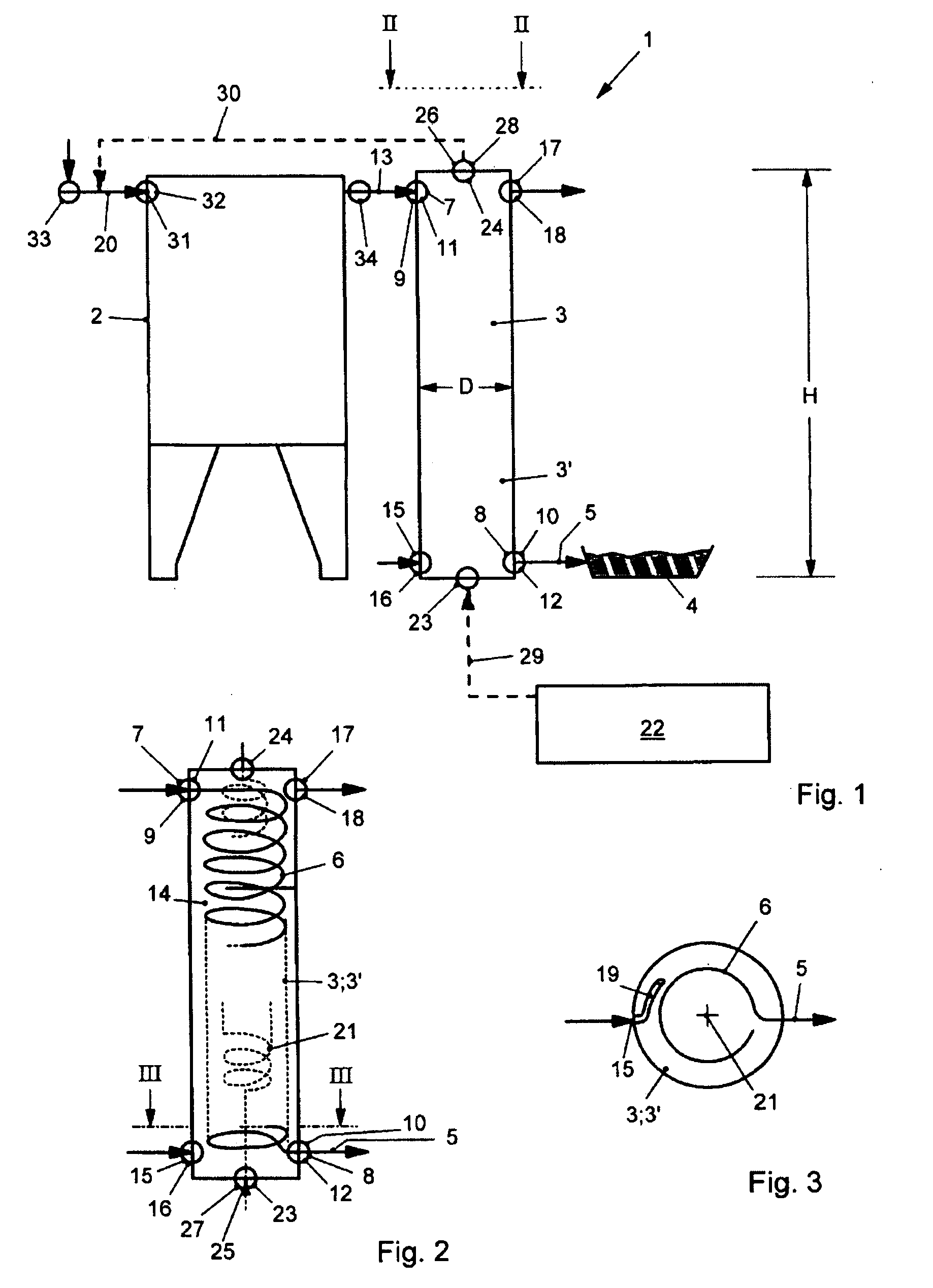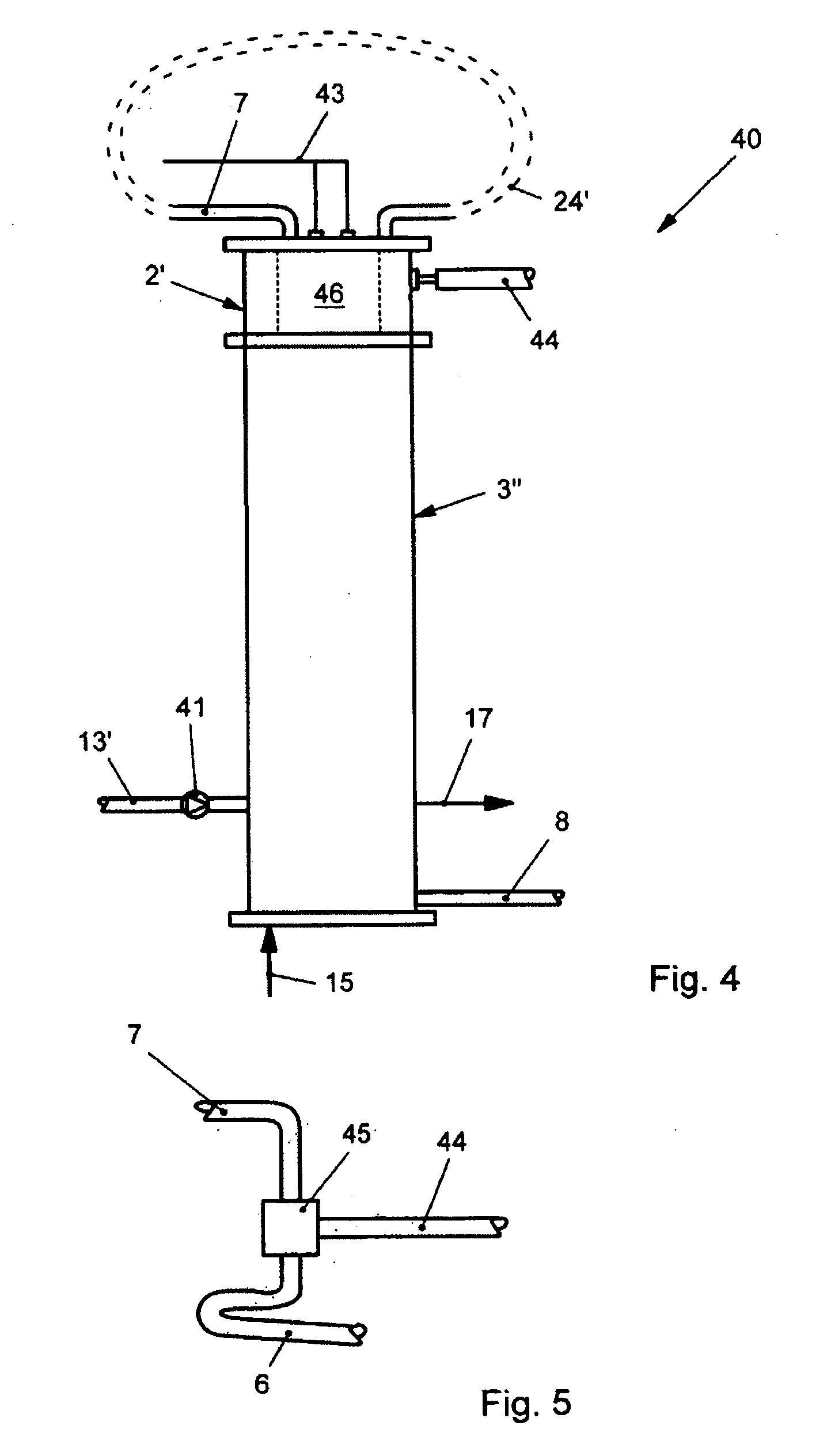System for pasteurizing animal food
a technology for pasteurizing systems and animal food, which is applied in the direction of food preservation, animal feeding stuff, stationary tubular conduit assemblies, etc., can solve the problems of difficult pasteurizing colostrum, the risk of destroying valuable milk components, and the risk of milk being destroyed, etc., and achieves the effect of simple handling
- Summary
- Abstract
- Description
- Claims
- Application Information
AI Technical Summary
Benefits of technology
Problems solved by technology
Method used
Image
Examples
Embodiment Construction
[0030]FIG. 1 shows diagrammatically a pasteurizing system—denoted by 1—which essentially comprises a pasteurizing unit 2 and a heat exchanger 3 and 3′. In addition, an animal drinking trough device 4 is connected to the pasteurizing system 1 via a line 5.
[0031]The heat exchanger 3 and 3′ is constructed so as to be cylindrical and has a height extent “H”, and its circular cross section has a diameter “D”, wherein the ratio of H:D in this exemplary embodiment is 4:1 which gives a relatively long cooling section and thus ensures an even and gentle cooling without losses in quality.
[0032]As can be seen in FIG. 2, the heat exchanger 3, as a first exemplary embodiment, has in its interior a pipe in the form of a cooling serpentine 6 which is constructed in the shape of a helical spring and passes virtually completely through the height extent “H” of the heat exchanger 3. The cooling serpentine 6 itself is connected by its top end to a feed port 7 and by its bottom end to an outlet port 8,...
PUM
 Login to View More
Login to View More Abstract
Description
Claims
Application Information
 Login to View More
Login to View More - R&D
- Intellectual Property
- Life Sciences
- Materials
- Tech Scout
- Unparalleled Data Quality
- Higher Quality Content
- 60% Fewer Hallucinations
Browse by: Latest US Patents, China's latest patents, Technical Efficacy Thesaurus, Application Domain, Technology Topic, Popular Technical Reports.
© 2025 PatSnap. All rights reserved.Legal|Privacy policy|Modern Slavery Act Transparency Statement|Sitemap|About US| Contact US: help@patsnap.com



